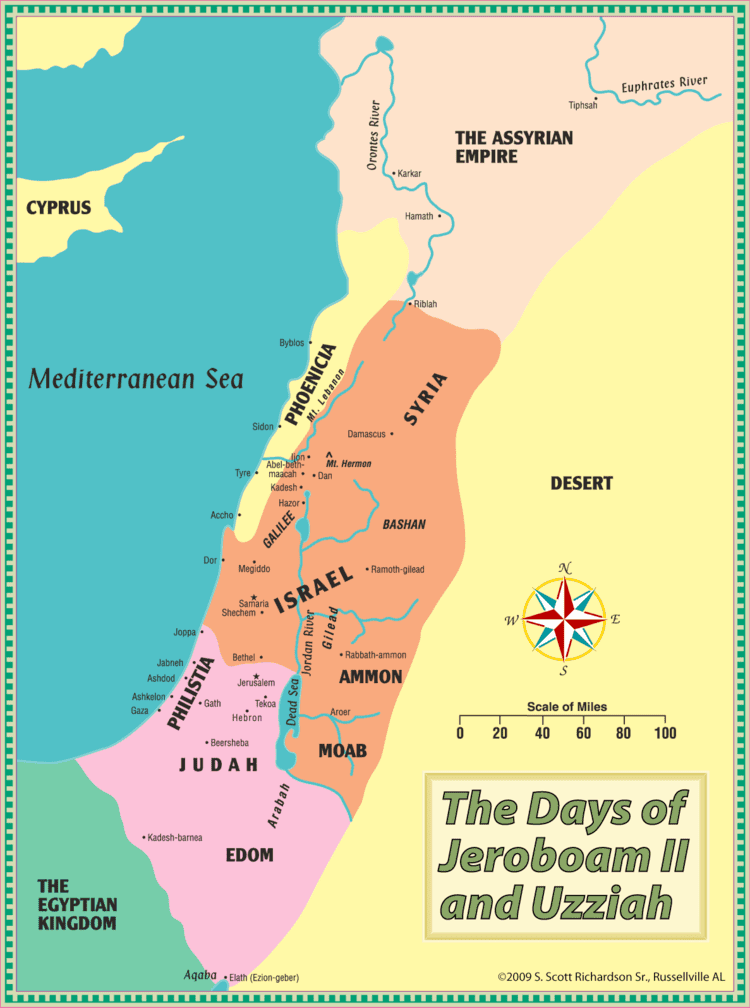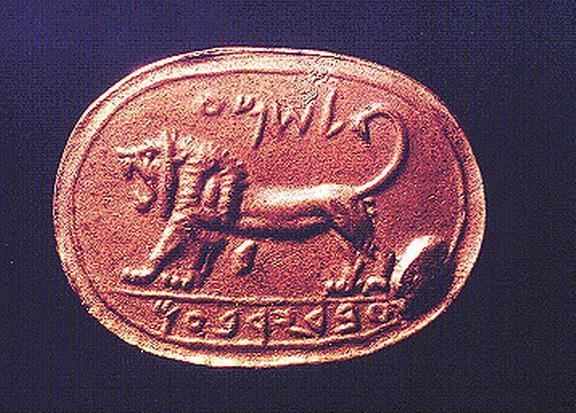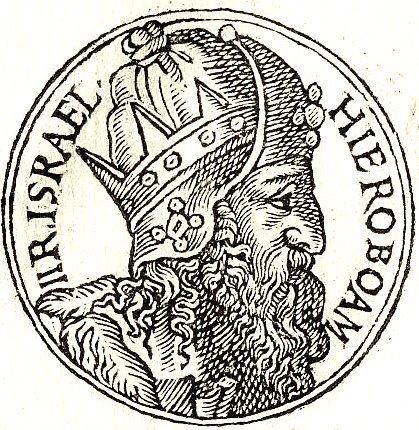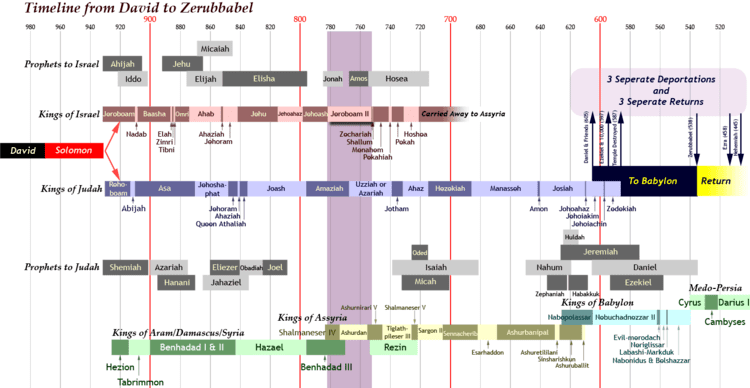Great-grandparents Jehu, Jehú | Successor Zechariah of Israel Grandparent Jehoahaz of Israel | |
 | ||
Similar Jeroboam, Jehoash of Israel, Zechariah of Israel | ||
Jeroboam II (Hebrew: יָרָבְעָם Yārāḇə‘ām; Greek: Ιεροβοάμ; Latin: Jeroboam) was the son and successor of Jehoash, (alternatively spelled Joash), and the fourteenth king of the ancient Kingdom of Israel, over which he ruled for forty-one years in the eighth century BC. His reign was contemporary with those of Amaziah (2 Kings 14:23) and Uzziah (15:1), kings of Judah.
Contents
- Jonah s prophecy of prosperity in jeroboam ii s day
- History
- Earthquake in Israel c 760 BC
- In the Bible
- References

Jonah s prophecy of prosperity in jeroboam ii s day
History

William F. Albright has dated his reign to 786–746 BC, while E. R. Thiele says he was coregent with Jehoash 793 to 782 BC and sole ruler 782 to 753 BC.

He was victorious over the Arameans (2 Kings 14:26, 27), conquered Damascus (14:28), and extended Israel to its former limits, from "the entering of Hamath to the sea of the plain".

In 1910, G. A. Reisner found sixty-three inscribed potsherds while excavating the royal palace at Samaria, which were later dated to the reign of Jeroboam II and mention regnal years extending from the ninth to the 17th of his reign. These ostraca, while unremarkable in themselves, contain valuable information about the script, language, religion and administrative system of the period.

Archaeological evidence confirms the biblical account of his reign as the most prosperous that Israel had yet known. By the late 8th century BC, the territory of Israel was the most densely settled in the entire Levant, with a population of about 350,000. This prosperity was built on trade in olive oil, wine, and possibly horses, with Egypt and especially Assyria providing the markets. According to the prophet Amos, the triumphs of the king had engendered a haughty spirit of boastful overconfidence at home (Amos vi. 13). Oppression and exploitation of the poor by the mighty, luxury in palaces of unheard-of splendor, and a craving for amusement were some of the internal fruits of these external triumphs.

Under Jeroboam II, HaShem was worshiped at Dan and Beth-el and at other old Israelitish shrines, but through actual images, such as the golden calf. These services at Dan and Beth-el, at Gilgal and Beer-sheba, were of a nature to arouse the indignation of the prophets, and the foreign cults (Amos v.), both numerous and degrading, contributed still further to arousing of the prophetic spirit. Jeroboam's reign was the period of the prophets Hosea, Joel, Jonah and Amos, all of whom condemned the materialism and selfishness of the Israelite elite of their day: "Woe unto those who lie upon beds of ivory ... eat lambs from the flock and calves ... [and] sing idle songs ..." The book of Kings, written a century later condemns Jeroboam for doing "evil in the eyes of the Lord", meaning both the oppression of the poor and his continuing support of the cult centres of Dan and Bethel, in opposition to the temple in Jerusalem.
Earthquake in Israel c. 760 BC
A major earthquake had occurred in Israel c. 760 BC, which may have been during the time of Jeroboam II, towards the end of his rule. This earthquake is mentioned in the Book of Amos as having occurred during the rule of "Jeroboam son of Jehoash" (Amos 1:1).
Geologists believe they have found evidence of this big earthquake in sites throughout Israel and Jordan. Archeologists Yigael Yadin and Israel Finkelstein date the earthquake level at Tel Hazor to 760 BC based on stratigraphic analysis of the destruction debris. Similarly, David Ussishkin arrives at the same date based on the "sudden destruction" level at Lachish.
According to Steven A. Austin, the magnitude of this earthquake may have been at least 7.8, but more likely as high as 8.2. "This magnitude 8 event of 750 B.C. appears to be the largest yet documented on the Dead Sea transform fault zone during the last four millennia."
The epicenter of this earthquake may have been 200–300 km north of present-day Israel.
Multiple biblical references exist to this earthquake in the Book of Amos (3:14, 6:11, 8:8, 9:1), and also in Zechariah 14:5. Indirect references may be found in Isaiah 2:19, Joel 3:16, and Hebrews 12:28.
Recent excavations by Aren Maeir in ancient Gath have revealed evidence of a major earthquake.
"Based on the tight stratigraphic context, this can be dated to the mid-8th cent. BCE" ...
In the Bible
His name occurs in the Old Testament only in 2 Kings 13:13; 14:16, 23, 27, 28, 29; 15:1, 8; 1 Chronicles 5:17; Hosea 1:1; and Amos 1:1; 7:9, 10, 11. In all other passages it is Jeroboam I, the son of Nebat that is meant.
